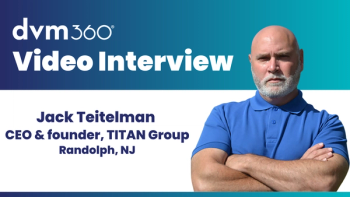
Issues often neglected in employee manuals
I am sure that by now pretty much every veterinary hospital owner is aware that it is important to have an employee handbook or manual for clinic workers.
I am sure that by now pretty much every veterinary hospital owner is aware that it is important to have an employee handbook or manual for clinic workers.
The benefits of taking time to put one together are enormous.
Everyone who joins the clinic can read about the policies of the practice, saving management a lot of time. Also, no one can claim later that they weren't told this or that when it's time for a performance review or reprimand.
There are a lot of "boilerplate" or "template" veterinary-practice employee manuals out there, from various sources. Many are quite good and almost all are far better than nothing at all. However, many don't include subtle issues that may turn out to be important when an employee engages in undesirable behavior that isn't covered in the practice booklet.
New causes of action
As the 21st century moves forward, many in the state and federal judiciaries are carving out a new group of citizens' rights and expectations. Depending upon your political views, this reality may or may not be palatable. Nonetheless, the fact remains that new avenues for employees to follow to obtain money damages from the workplace are developing constantly.
Additionally, the emergence of new communication technologies has created a vast array of new legal rights and responsibilities. That would be, of course, mainly rights of the employees and public authorities and responsibilities for employers.
But, not to worry. A carefully constructed and thoroughly inclusive employee handbook can go a long way toward helping protect the veterinary hospital and its owners, partners, shareholders and members from undue exposure to lawsuits and administrative sanctions. I've outlines some of the issues you should address:
Invitees and acquaintances
You know what an employee acquaintance is. That is the ex-boyfriend of your recently hired technician who insists on coming to the front desk constantly and asking to have a word with her. (He probably wants to retrieve his stuff from their apartment or to beg for a reconciliation or discuss something else urgent).
"Invitee" is a legal term that means someone to whom your receptionist says, "It's OK for you to wait for me in the treatment room so I can drive you home at lunch time." An invitee also could be that same receptionist's lawyer who just stops by on his way to court to "chat about developments" in her ongoing divorce case.
Employee invitees and acquaintences are not clients. They are not vendors. Their presence in the clinic does nothing to enhance your practice. Consequently, it is important for the employee manual to specify that they are not welcome to appear at your facility on a reqular basis.
Ex-boyfriends start fights in the waiting room. Friends hanging around put fingers in cages and chat with the staff while they are on the clock. The employee manual should mention that such visitors are welcome only at management's discretion and that their presence should be minimized.
Defining 'personal space'
Any law junkie probably has heard of the concept known as the "expectation of privacy." This idea springs from the U.S. Constitution and means that, as citizens, we are supposed to be protected against intrusion into our "private areas" where we would not reasonably anticipate intrusion by authorities or their agents.
A person's house, for example is such a private area and cannot be searched without a warrant. Other spaces may or may not be private; hence, we see a lot of press about whether cops can break into kids' gym lockers at school when they suspect drugs to be there.
Veterinary-hospital employee manuals may, and probably should, be used to help shrink or eliminate the "expectation of privacy" in the workplace.
For example, language can be included that specifically mentions the areas where employees are authorized to store personal belongings (coats, hats, purses, cell phones, etc.). The manual may go on to explain that these areas are practice property and as such are subject to search.
I recommend that the text state specifically that a search may be conducted, if necessary, by management and/or authorities without a warrant.
Keep in mind that, with continuing expansion of employee rights under statutory law and judicial interpretations, this employee-manual language may or may not actually be effective in limiting employees' "expectation of privacy" rights. But it may work in some states and, if nothing else, can go a long way to discourage workers from bringing things to work that you really don't want there: booze, tasteless pictures, expensive jewelry, street drugs, whatever.
And, if your local legal counsel advises you that the language is effective in your jurisdiction, such manual provisions can make it a lot easier to prove employee theft if you suspect it.
Using communication devices
There is a rapidly expanding body of law regarding employees' personal use of computers, faxes, copiers and other communications technology.
It is not all that unusual for workers to abuse their right of access to the employer's computer equipment to receive pornographic material, make wagers, issue threats, engage in libel, violate copyrights, hack other computers and so on. If you believe that your practice and its owners could never be drawn into potential liability for such activity, you are mistaken.
Your practice manual should state specifically what, if any, personal use may be made of practice communications equipment. It needs to describe what disciplinary action may be taken in the instance of a violation. Finally, it should state that all workplace-gener- ated employee e-mail is subject to review and examination.
Then, once the employee signs your manual (indicating that he or she has read and understands what it contains), you have helped protect yourself.
The signed manual is a nice piece of added defense against being drawn into a lawsuit by some computer-hacking or identity-theft victim. It also helps protect you against a legal claim by one of your workers when the police come to your facility and you give them access to that worker's e-mail or other computer files without the worker's permission.
Dr. Allen is president of the Associates in Veterinary Law P.C., which provides legal and consulting services to veterinarians. Call (607) 754-1510 or visit
Newsletter
From exam room tips to practice management insights, get trusted veterinary news delivered straight to your inbox—subscribe to dvm360.




